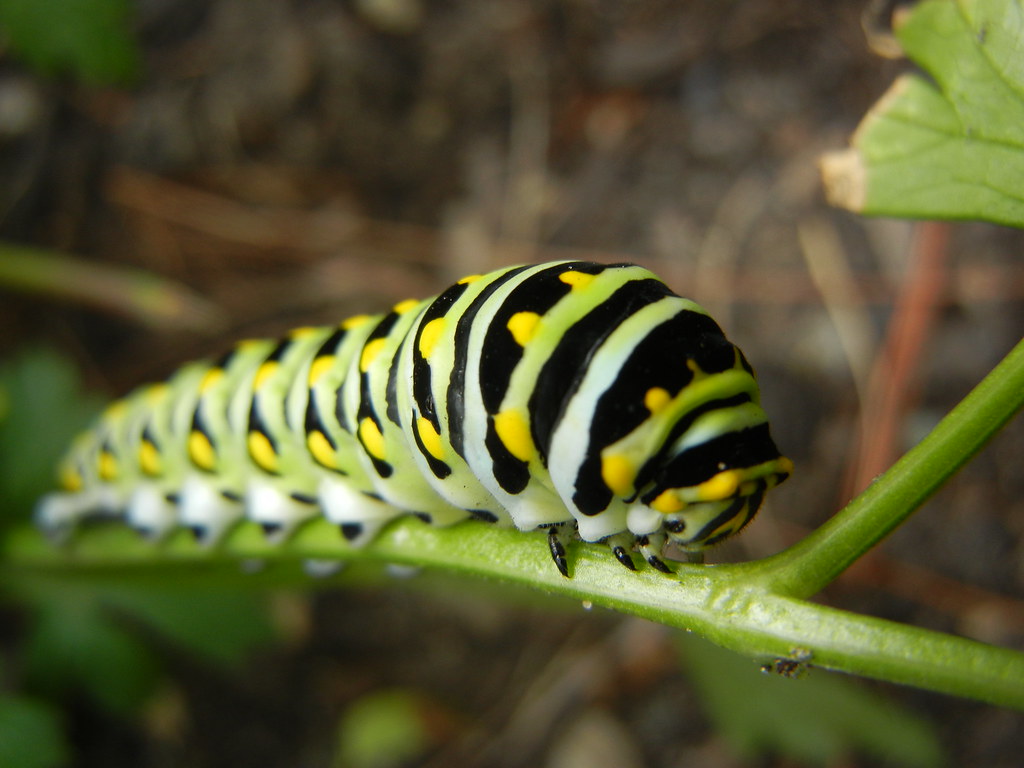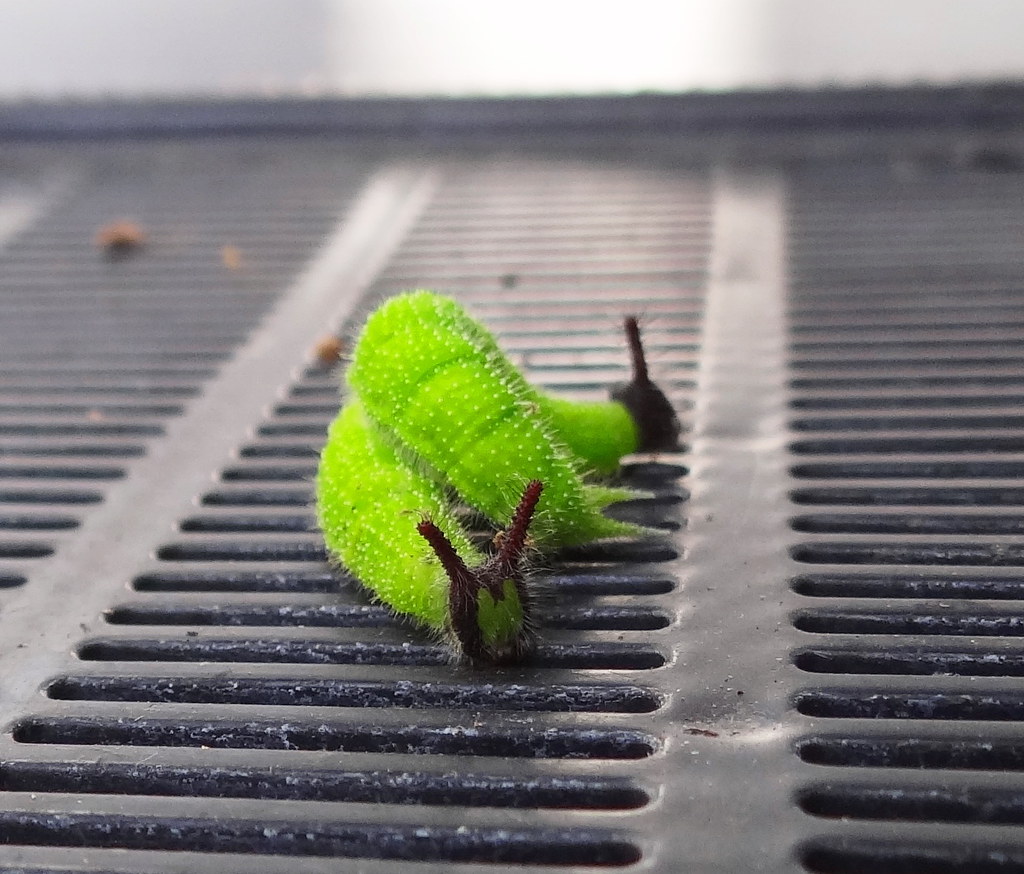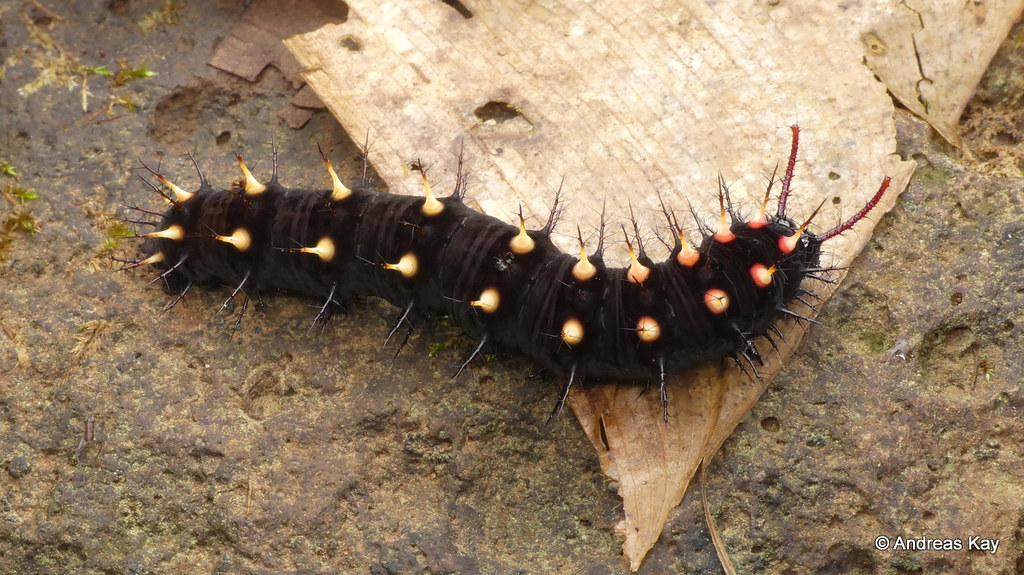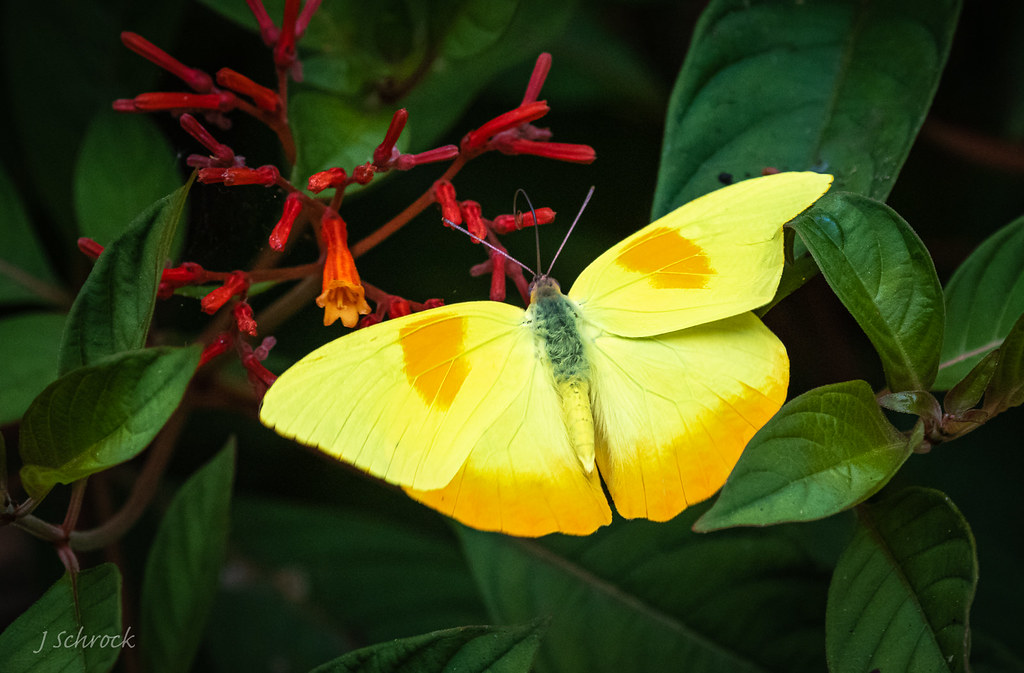10 Beautiful Butterflies and Their Ugly Duckling Caterpillars
Saturday, 19 June 2021

“There once was an ugly duckling,” goes the old song. This could not be truer of these stunning butterflies and their most peculiar caterpillars. Another opportunity to scratch your head at the vagaries of Mother Nature, take a look at this pictorial proof of butterfly beauty and caterpillar creepiness!
1 The Tiger Swallowtail
Found in the Eastern side of the US, this butterfly often produces two or three batches of eggs each year which puts it among the more fecund of butterflies. You can see the black “tiger” strips on the wing of the male (a shadow of these stripes can be seen on the female but they do not to attract a mate – the male does all the leg work!).Beautiful as this species is, the big surprise is in the caterpillar stage of its life. Usually it was lie on a branch or leaf and will appear to be a piece of bird dropping, which is nice. However, if you disturb it then it rears its head and looks pretty much like a snake that is about to give you a piece. A very scary caterpillar!
2. The Common Nawab

The Common Nawab is found all over Asia and is a superb specimen with a wingspan of about ten centimeters. It’s a fast flyer – you have to really be quick off the mark to spot one and study it. As well as the speed it lives in the canopy, making it an even more difficult species to enjoy. One of the more remarkable aspects of this butterfly is what its caterpillar looks like! More slug-looking than anything, this little guy is giving off a message to his predators that he will not make a tasty meal. I am sure I saw something like this on Doctor Who!


3. The Evening Brown

Although not the most colorful of our list, the Evening Brown is a lovely butterfly, with its mosaic of eyespots and cloudy wings. The eyespots are great for confusing predators. It comes from Australia and can be seen in the bush just before complete darkness. It loves the odd can of lager and a barbecue. It looks like a leaf, which is a shame, but you should see its caterpillar! Do not mistake the purple protuberance for eyes – these are horns designed to make it look scary to other creatures (notably those of its own size). What makes this caterpillar doubly disturbing is the fact it has horns at the end of its body as well. That way, it looks as if either end is the front end – and so its message to would be attackers is don’t mess with me – bottom or top! No end of rude jokes could be considered, but I will err on the side of caution and let you use your imagination.

4. The Malachite Butterfly

This butterfly is named after the green mineral malachite – and you can see why. It is usually found in Central and South America but you will get sightings as far north as Texas and Florida. It is rare, however, and it holds a grisly secret! This beautiful and dazzling butterfly feeds off flower nectar. Fair enough, you might say, but it also feeds on bat dung, dead animals and rotting fruit. From waste and death comes such incredible pulchritude. One of life’s mysteries to ponder, I guess! The caterpillar looks like its dad, don’t you think?

5. Great Purple Hairstreak

A beautiful butterfly from the south of the US, the Great Purple Hairstreak is at the moment undergoing intensive personality disorder therapy because it doesn’t actually have any purple on it. The scales on its upper wings are blue, so giving it its alternative name, the Great Blue Hairstreak (GBH to his friends, which stands for Grievous Bodily Harm in the UK!).
 The caterpillar (larvae more rightly) is pretty much the overweight kid of the caterpillar world. Bulbous and seemingly hunch backed, he can’t make many friends in the school yard, can he? Reminds me of Whoopi Goldberg in “The Color Purple” where she utters the words “Boy, you sure is ugly!”
The caterpillar (larvae more rightly) is pretty much the overweight kid of the caterpillar world. Bulbous and seemingly hunch backed, he can’t make many friends in the school yard, can he? Reminds me of Whoopi Goldberg in “The Color Purple” where she utters the words “Boy, you sure is ugly!”6. The Eastern Black Swallowtail

A butterfly found throughout most of North America, this beauty is also the state butterfly of Oklahoma. If you have dill or parsley in your garden you may well attract its attention for its caterpillars feed on these plants. The Swallowtail is not huge – about eight to eleven centimeters but the red spot at its base just makes this butterfly perfect to me. Another of its unique features is that when it is in danger, its osmetrium (a forked gland which looks like a snake’s tongue!) releases a smell that warns off predators!
The caterpillar makes me think of what may have happened if a tiger and a worm had gone through that machine in the movie “The Fly”!

It can also produce two small “horns” to intimidate and scare away would be predators. Looks like the light just went on!
7. The Blue Morpho

These butterflies are simply dazzling. They are from the category Morpho, they are found in South America and their calling card is their absolutely dazzling iridescent wings which from the right angle has the sheen of aluminum. These babies are big – their wing span can be up to twenty centimeters (or around eight inches for the purists out there!). Ranging from Mexico to Venezuela this gorgeous insect is protected under international law and should never be sold in glass jars! Its underside, strangely, is brown with “eyes” – a typical camouflage technique. Its caterpillar is, well let’s not put too fine a point on it – gross.

8. Magellan’s Iridescent Birdwing
 An incredibly rare species, the Magellan’s Iridescent Birdwing (or Troides Magellanus) is only found in Taiwan. It is thought there are only around two thousand of them left in the wild, with possibly another five hundred in collections around the globe. The yellow you can see in the picture is modified at certain angles to a blue-green color. This can only be seen at a very narrow angle to the insect itself. This is known as a grazing iridescence and is brought about because of light diffraction. The Morpho above, however, gets its iridescence through the ridge lamellae (a very thin structure, similar to scales) on its wings.
An incredibly rare species, the Magellan’s Iridescent Birdwing (or Troides Magellanus) is only found in Taiwan. It is thought there are only around two thousand of them left in the wild, with possibly another five hundred in collections around the globe. The yellow you can see in the picture is modified at certain angles to a blue-green color. This can only be seen at a very narrow angle to the insect itself. This is known as a grazing iridescence and is brought about because of light diffraction. The Morpho above, however, gets its iridescence through the ridge lamellae (a very thin structure, similar to scales) on its wings.The butterfly is really among the swan-ugly duckling school of butterflies. Its caterpillar isn’t much to look at really, is it?

9. Orange-barred Sulphur

This species only colonized the Florida (from the South) in the nineteen twenties, which corresponds approximately when the state became a haven for the older of own species. Surely no coincidence? A species that makes you draw breath when you encounter it, the male has the full on orange spots on his wings which go so well with the remainder of his yellowy wings. This is a butterfly that is designated “secure globally” so you – and your grand children – are quite likely to see it in the right place!
The caterpillar might well give you nightmares though!

10. The Monarch

The Monarch is one of those better known butterflies because of the mammoth journeys it can undertake. It’s a wonder that Disney or Pixar haven’t tuned in on this yet, it would probably make a fantastic animated adventure! They make a huge migration from the north to the south of the US, mostly starting in August and the other way around in the spring. The lifespan of the Monarch is only two months (once full grown). However, to get around that the last generation of the summer enters a diapause. That is a shutting down of their reproductive phase. As such they can live much longer – up to seven or eight months – and get those eggs laid at the beginning of the next spring.
The Monarch caterpillar has now been spotted in places such as Bermuda. This is because their staple food, milkweed, is being used more and more as a garden ornament. How they actually figure out where it is, I don’t have a clue! “Oh, guess what, boys!” one says at the Monarch Club, “Mrs Jones of Acacia Drive, Bermuda, has planted milkweed. Fancy a bit?”

Give a Gift
If you enjoyed this article, please consider making a gift to help Ark In Space to continue to bring you fascinating features, photographs and videos.
Thank you!





